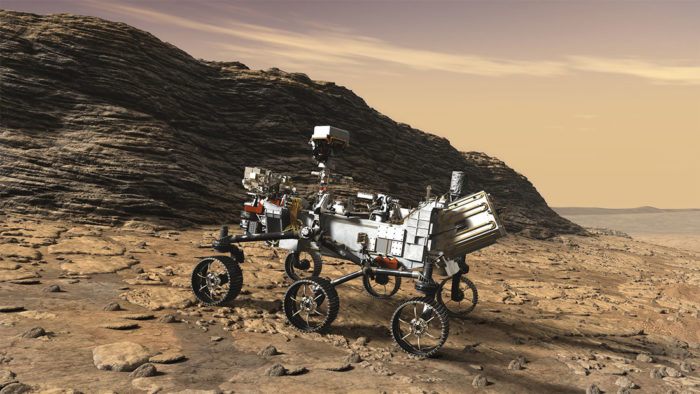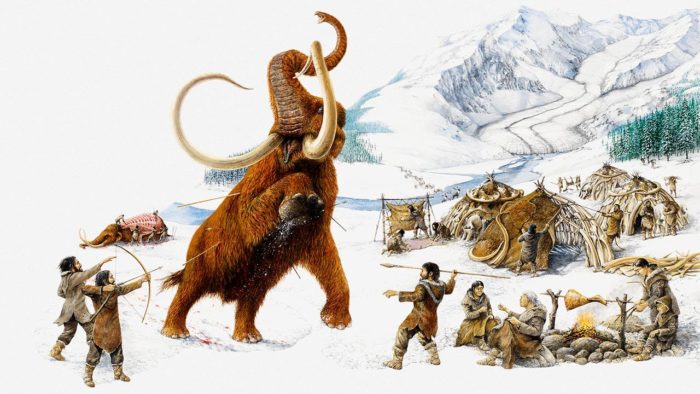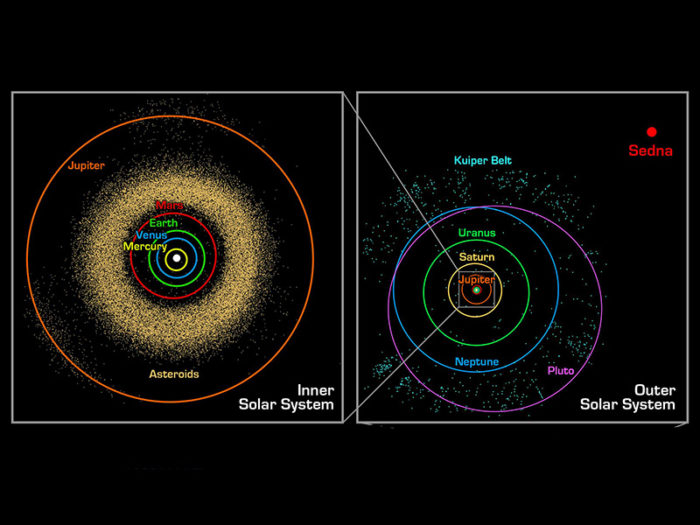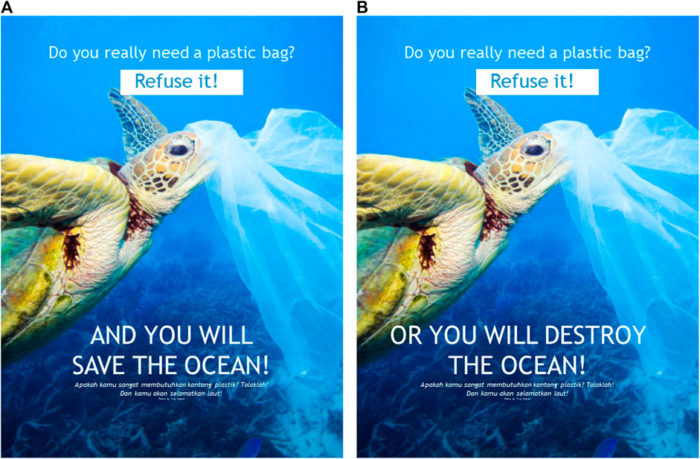Feb
26
2021
 I interviewed philosopher Philip Goff for the SGU (the show will air tomorrow with an edited version, and the full 1 hour discussion will be available for SGU members) about the multiverse and the fine-tuning problem. I was hoping by the end of the discussion one of us would have been convinced the other was correct (and I don’t care which, I just want to be confident that I understand this problem). In the end, we did not resolve our difference, but we did really clarify the issues well. This is a good exercise in logic, and also demonstrates how difficult it can be to deal with some statistical issues. I still admit I could be wrong here, I just don’t understand why. But here is the follow up.
I interviewed philosopher Philip Goff for the SGU (the show will air tomorrow with an edited version, and the full 1 hour discussion will be available for SGU members) about the multiverse and the fine-tuning problem. I was hoping by the end of the discussion one of us would have been convinced the other was correct (and I don’t care which, I just want to be confident that I understand this problem). In the end, we did not resolve our difference, but we did really clarify the issues well. This is a good exercise in logic, and also demonstrates how difficult it can be to deal with some statistical issues. I still admit I could be wrong here, I just don’t understand why. But here is the follow up.
First – here is Philip writing about our conversation and why he thinks he is still correct. In this post I will summarize where I think the discussion is and why I am still not convinced.
Here are the points of common ground (approved by Philip):
1 – The probability of our universe existing is unaffected by the presence or absence of other universes. To think otherwise is the inverse gambler’s fallacy.
2 – The probability that some universe capable of evolving complex life exists (assuming the premises of the fine-tuning problem) is higher if there are multiple universes than if there is only one universe.
3 – The key to the question of inferring a multiverse from the observation of our universe (again, assuming the fine-tuning problem and that there is no other solution) is therefore asking the right question – do we consider the probability of our universe existing or of some universe existing?
4 – There is a selection effect in that only a universe capable of evolving sentience would be observed (assuming no external observer).
Continue Reading »
Feb
23
2021
 We remember our dreams to varying degrees, but we all dream. Even people who never remember dreaming, dream. Dreaming is detected clinically by what is called REM sleep, for rapid-eye movements. When we dream a part of our brain stem (the locus ceruleus) reduces our response to external stimuli and also is involved in inhibiting our voluntary movements below the brainstem so that we don’t act out our dreams. The pathways to the eye muscles are spared this paralyzing effect, which is why we still move them when we dream.
We remember our dreams to varying degrees, but we all dream. Even people who never remember dreaming, dream. Dreaming is detected clinically by what is called REM sleep, for rapid-eye movements. When we dream a part of our brain stem (the locus ceruleus) reduces our response to external stimuli and also is involved in inhibiting our voluntary movements below the brainstem so that we don’t act out our dreams. The pathways to the eye muscles are spared this paralyzing effect, which is why we still move them when we dream.
An ongoing question of research involves understanding exactly what the dreaming state is. It is an altered state of consciousness. We are still conscious in that we can think, we can experience our own existence, and we even can form memories. But all of these functions are altered. At a gross level, brain activity during REM and wakefulness are very similar – if you look at an EEG, for example, the electrical activity of the brain in both states is similar. As researchers are looking with more sophisticated tools, like functional MRI scans, they are finding that activity, again, is largely similar:
Results revealed activity in areas of the brain that control sight, hearing, smell, touch, balance and body movements.
One area that may be different, though, is the frontal cortex, with studies finding decreased frontal cortex activity during REM vs wakefulness. This is obviously a very quick summary of a very complicated area of neuroscience, but the bottom line for the purposes of this article is that the brain is very active when we are dreaming, we are in some sort of state of consciousness with all the basic brain functions still active, but there are differences likely dealing with the higher functions of cognition. One way to think about this is that our “reality-testing” apparatus operates differently while dreaming. We tend to be more accepting of bizarre events and thoughts in dreams that we struggle to make sense of when later remembering while awake. The dreaming you is still you but it’s a different you, similar to how the drunk you is also you but different.
Continue Reading »
Feb
19
2021
 In the British Drama, Years and Years, they imagine the very near future. I do wonder what someone from 2010 would have thought about a tv show accurately depicting 2020. In any case, one of the throw-away lines of the show was that there are no more bananas. The writers did their research – that the Cavendish banana will disappear sometime in the 2020’s is extremely likely. It is being threatened by a fungus called Tropical Race 4 (TR4), which a century ago wiped out the previous commercial dessert banana, the Gros Michel (it’s not extinct, but cannot be grown commercially anymore).
In the British Drama, Years and Years, they imagine the very near future. I do wonder what someone from 2010 would have thought about a tv show accurately depicting 2020. In any case, one of the throw-away lines of the show was that there are no more bananas. The writers did their research – that the Cavendish banana will disappear sometime in the 2020’s is extremely likely. It is being threatened by a fungus called Tropical Race 4 (TR4), which a century ago wiped out the previous commercial dessert banana, the Gros Michel (it’s not extinct, but cannot be grown commercially anymore).
TR4 is now on every continent that grows bananas. It is literally just a matter of time before the entire commercial Cavendish market is wiped out. TR4 and similar funguses also threaten other banana varieties (more like plantains) that provide a staple source of nutrition for large segments of the world (about 400 million people). So this is not just about no longer having access to a favorite dessert fruit – this can create a serious threat to food security in parts of the world.
Part of the problem is that all Cavendish banana plants are clones. The plants are triploid hybrids, which is why they don’t produce seeds. This also makes them sterile. They are reproduced by taking new shoots that grow off the underground bulb (or corm). For this reason the entire Cavendish industry is basically comprised of clones. This is the ultimate monoculture – which leaves them particularly susceptible to disease, such as TR4.
Continue Reading »
Feb
18
2021
 The landing is the tricky part.
The landing is the tricky part.
Mars is a difficult planet to land on. It has just enough of an atmosphere to be a problem, about 1% the pressure of Earth’s atmosphere. This is thin so provides much less breaking (but still useful) to slow the craft, but thick enough to produce dust storms and other menaces. Mars has 0.376 G surface gravity, which is a lot less than Earth but significantly more than the Moon. It is enough to make landing a challenge.
The Mars Perseverance Rover is set to land on Mars at 4pm Eastern time today (2/18/2021). This is perhaps the trickiest Mars probe landing yet, specifically because we are aiming for difficult terrain. Previous landers and rovers went for safe landing sites, rather than scientifically most interesting sites. Perseverance will have instruments to look for signs of ancient life, and so has to go where the looking is good, not necessarily where the landing is safe.
The landing procedure has been characterized by NASA as seven minutes of terror. The communication delay to Mars at this time will be 11 minutes, so it will all be over before we seen what happened. The landing procedure starts with the lander breaking away from the spacecraft. The lander has a heat shield which will slow the craft as it screams through the thin Martian atmosphere. Once the craft is slowed enough, it will deploy a parachute to further slow it down.
Continue Reading »
Feb
16
2021
 Before around 13,000 years ago large mammals walked North America – the Mammoth, most famously, but also giant beavers, giant tree sloths, glyptodonts, and the American cheetah among them. By around 11,000 years ago they were all gone (38 genera, mostly mammals). Extinction is a natural part of the cycle of ecosystems, and no species lasts forever. But when paleontologists identify a pulse of extinctions, above the background rate, they call that an extinction event, and this definitely qualifies. Extinction events call out for answers – what was the cause?
Before around 13,000 years ago large mammals walked North America – the Mammoth, most famously, but also giant beavers, giant tree sloths, glyptodonts, and the American cheetah among them. By around 11,000 years ago they were all gone (38 genera, mostly mammals). Extinction is a natural part of the cycle of ecosystems, and no species lasts forever. But when paleontologists identify a pulse of extinctions, above the background rate, they call that an extinction event, and this definitely qualifies. Extinction events call out for answers – what was the cause?
In the case of the North American megafauna extinction, there are two main hypotheses. The first is the overkill hypothesis – that the extinction coincides with the arrival of paleoindians on the continent, and that is not likely a coincidence. Generally speaking the arrival of humans into any ecosystem correlates with a pulse of extinctions. Perhaps the humans taking up residence in North America were big-game hunters, and the megafauna could not adapt quickly enough to this clever predator.
The second major hypothesis is that climatic change was the major cause. The last major glacial period lasted from 125,000 to 14,900 years ago, and then started the current interglacial period (the holocene) that we are in. However, this warming was interrupted in North American by the Younger Dryas, a cold snap that lasted from 12,900 to 10,600 years ago. The cause of this cold spell is also a controversy, with the two main hypotheses being a local comet impact vs the effects of major glacial melt on ocean currents. Either way, by the time the cold snap was over, the megafauna was gone.
Continue Reading »
Feb
15
2021
 I have often said, we all have a little conspiracy theorist inside of us. By this I mean that we all have some common psychological features that can lend themselves to believing in conspiracies. Some, of course, more than others. Going down a conspiracy rabbit hole is a tendency we may have to fight against. There has to be a point where we say to ourselves, wait a minute, can this actually be true? What is the evidence? Am I just fooling myself, giving in to my prejudices, or going along with my tribe? We all have a little skeptic inside of us as well, and at some point one wins over the other.
I have often said, we all have a little conspiracy theorist inside of us. By this I mean that we all have some common psychological features that can lend themselves to believing in conspiracies. Some, of course, more than others. Going down a conspiracy rabbit hole is a tendency we may have to fight against. There has to be a point where we say to ourselves, wait a minute, can this actually be true? What is the evidence? Am I just fooling myself, giving in to my prejudices, or going along with my tribe? We all have a little skeptic inside of us as well, and at some point one wins over the other.
Conspiracy researcher Asbjørn Dyrendal, a professor in NTNU’s Department of Philosophy and Religious Studies, agrees. He has found that if you ask subjects about enough conspiracies, everyone eventually endorses belief in some conspiracy. But there is, of course, a matter of degrees. Dyrendal thinks everyone believes in a conspiracy “a little”. Not everyone believes in a so-called grand conspiracy, or has made one or more grand conspiracies the center of their beliefs.
There is a general tendency, however, to accept some beliefs not based upon rigid logic and evidence, but because it fits with our biases:
We are all more vulnerable to believing what we think is right, especially when our identity is at stake and emotions are strong. It can be a bit like the emotions associated with football.
By “football” he means soccer (for my American readers), but it doesn’t matter for the analogy. Any sports fan has experienced this – your team is better and more deserving. The other team is lucky, playing dirty, and the referee’s are unfairly calling things in their favor. It’s not absolute, but it is clearly a bias, and the more of a fan you are of your team, the more your identity and emotions are attached to their victory or loss, the more biased you are likely to be.
Continue Reading »
Feb
12
2021
 Like many things in the universe, the complexity of reality defies our attempts at simple categorization or clean demarcation lines. One humorous example sometimes offered – is a taco a sandwich? But there are many serious challenges in categorization: What is a planet? There are reptiles that give birth to live young and two mammals that lay eggs. Disease classification in medicine is often a mess of blurry lines and statistical probabilities.
Like many things in the universe, the complexity of reality defies our attempts at simple categorization or clean demarcation lines. One humorous example sometimes offered – is a taco a sandwich? But there are many serious challenges in categorization: What is a planet? There are reptiles that give birth to live young and two mammals that lay eggs. Disease classification in medicine is often a mess of blurry lines and statistical probabilities.
Along these lines – where is the edge of our solar system? I do think there is a reasonable answer here, but the solar system actually has several meaningful boundaries. The main part of the solar system, the part we all think of and which is represented in most models, contains the eight planets and everything within their orbits, including asteroids, comets, and dwarf planets. Let’s talk distance – Neptune is 4,609,592,833 km from the sun, or 30.8 au (astronomical units). An au is the distance from the sun to the Earth, which is about 150 million km. These are average distances. Neptune’s orbit is somewhat elliptical, 30.8 is its current and near maximal distance, but it gets as close as 28.8 au.
But clearly we would not end the solar system at Neptune. We have to include Pluto, which is the transition to the Kuiper belt and all the Kuiper belt objects (KBOs). The Kuiper belt is a ring in the plane of the solar system beginning at the orbit of Neptune, around 30 au, and extending out to about 1,000 au. So right there we have extended the size of the solar system in terms of distance from the sun by a factor of 33 times. The Kuiper belt is comprised of dwarf planets like Pluto, but also including Haumea, Makemake, and Eris. There are lots of bits of rick and ice, and likely many more dwarf planets and smaller planetoids to be discovered. Astronomers recently confirmed the orbit of the farthest confirmed individual object in the Kuiper belt, called Farfarout, with a highly elliptical orbit that takes it out to 135 au.
We can also consider the sun’s influence on surrounding space. The sun has a powerful magnetic field, which is called the heliosphere. The edge of its influence is called the heliopause, beyond this point interstellar conditions prevail and there is no longer any influence from the heliosphere. The heliopause is about 123 au from the sun.
Continue Reading »
Feb
11
2021
 There are many reasons to switch to a source of energy that is clean and renewable, such as rooftop solar for homes. The most obvious is that renewable energy reduces your carbon footprint. I still will here people cite misinformation that making solar panels produces more carbon than they save, but this is simply not true. Lifetime analysis of both carbon footprint and energy efficiency indicate that solar panels are better, reducing CO2 by about 80%. This, of course, depends upon the sunlight conditions of your roof, and the mix of energy sources for the grid electricity that goes to your home.
There are many reasons to switch to a source of energy that is clean and renewable, such as rooftop solar for homes. The most obvious is that renewable energy reduces your carbon footprint. I still will here people cite misinformation that making solar panels produces more carbon than they save, but this is simply not true. Lifetime analysis of both carbon footprint and energy efficiency indicate that solar panels are better, reducing CO2 by about 80%. This, of course, depends upon the sunlight conditions of your roof, and the mix of energy sources for the grid electricity that goes to your home.
Solar energy also reduces pollution. Air pollution kills about 110,000 Americans every year, and several million worldwide. Further, the direct health care costs caused by air pollution in the US alone is in the hundreds of millions of dollars annually. The EPA estimates that clean air act rules save $82 billion over one decade. Further, studies have found that the total economic costs of air pollution run in the hundreds of billions:
Air pollution negatively impacts the U.S. economy, costing the U.S. roughly 5 percent of its yearly gross domestic product (GDP) in damages ($790 billion in 2014). The highest costs come from early deaths, attributable to exposure to fine particulate matter.
This does not even consider the long term costs of mitigating and dealing with the consequences of climate change. The cost to society is pretty clear, which means that even a massive investment in clean energy is cost effective.
Continue Reading »
Feb
09
2021
 Like it or not, we live in a society of other people, and we share resources, the environment, and infrastructure. This means that how other people behave and the choices they make affect you, as your choices affect others. Even if you live alone in the woods, your behavior affects the local environment, even if in a small way. As a result there are multiple layers of complex rules governing how we interact with each other in countless contexts. We have evolved a layer of rules, involving guilt, shame, a sense of justice, and other emotions, that powerfully govern our behavior. We have developed explicit laws and regulations that enforce rules by authority and power. And every culture and subculture tends to develop norms of behavior or “soft” rules that are enforced through peer pressure.
Like it or not, we live in a society of other people, and we share resources, the environment, and infrastructure. This means that how other people behave and the choices they make affect you, as your choices affect others. Even if you live alone in the woods, your behavior affects the local environment, even if in a small way. As a result there are multiple layers of complex rules governing how we interact with each other in countless contexts. We have evolved a layer of rules, involving guilt, shame, a sense of justice, and other emotions, that powerfully govern our behavior. We have developed explicit laws and regulations that enforce rules by authority and power. And every culture and subculture tends to develop norms of behavior or “soft” rules that are enforced through peer pressure.
The question is – how do we optimize these rules at every level in order to make our world as good as possible for as many people as possible? This includes balancing many concerns, including individual liberty, that are often at cross-purposes. And of course, different cultures will find a different optimal balance.
Implicit in this question is a more fundamental question – how do we affect people’s behavior? Whether or not we should has already been answered – yes, we should. The alternative in anarchy. Even if you are an extreme libertarian, you still want to influence other people’s behavior, just through market forces rather than laws. And I think even the most extreme libertarian would agree that things like murder should be illegal. Back to the real question, how do we affect behavior? Doing so by fiat definitely works – if you arrest someone and throw them in jail, you are taking direct physical control of their behavior. It seems obvious that such extreme measures should be a last resort, not a primary method of behavior modification.
At the other end of the spectrum is what is called a nudge. A recent study defines nudges this way:
Nudges are low-cost interventions that influence decision-making without limiting freedom of choice and have been tested in the environmental realm of electricity and water saving, reduced meat consumption, recycling, and decreasing private car transportation (Kollmuss and Agyeman, 2002; Cheng et al., 2011; Osbaldiston and Schott, 2012). Sunstein (2014) notes that nudging refers to “liberty-preserving approaches that steer people in particular directions, but that also allow them to go their own way” (p. 583), and that nudges “are specifically designed to preserve full freedom of choice” (p. 584).
Continue Reading »
Feb
08
2021
 You know the rule for headlines – if they ask a question, the answer is almost certainly “no”. This is no exception, but this post is really about bad science news reporting. A reader asked me about this story – “Hemp Batteries are Eight Times More Powerful than Lithium, Scientists Discover.” I didn’t believe it for a second. Clearly I needed to dig into the actual scientific discovery, if there were one, but generically, battery news is usually misleading because they typically fail to put the limited incremental advance into any context. My first question is – what do they mean by “more powerful”? Are they referring to energy density, power density, by mass or volume, and in any case what are the other critical features, like charge-discharge cycles? Usually there is a deal-breaker in there that gets shorted in the coverage.
You know the rule for headlines – if they ask a question, the answer is almost certainly “no”. This is no exception, but this post is really about bad science news reporting. A reader asked me about this story – “Hemp Batteries are Eight Times More Powerful than Lithium, Scientists Discover.” I didn’t believe it for a second. Clearly I needed to dig into the actual scientific discovery, if there were one, but generically, battery news is usually misleading because they typically fail to put the limited incremental advance into any context. My first question is – what do they mean by “more powerful”? Are they referring to energy density, power density, by mass or volume, and in any case what are the other critical features, like charge-discharge cycles? Usually there is a deal-breaker in there that gets shorted in the coverage.
Here is the paper on which it is reporting – Interconnected Carbon Nanosheets Derived from Hemp for Ultrafast Supercapacitors with High Energy. The study was published in 2013, so it is hardly news. I could not find any further research since then. There is a report from 2019 that the scientist involved, David Mitlin, patented this process and is developing a research facility in upstate NY. What is available gives the reporting the vibe of corporate press releases, probably fishing for funding, rather than genuine news.
The actual science here may be useful, there is just far too little evidence to tell. The original study heated the bast from from hemp waste (hemp is an industrial form of marijuana) to create “graphitic carbon nanosheets”. They then studies there electrical conductivity and energy storage capacity, essentially uses them as capacitors – not batteries. I don’t think this is a small detail, and I wish popular reporting would stop conflating batteries and capacitors. They are not the same thing. You can read the original paper for details, but it appears the resulting nanosheets have good conductivity at a range of temperatures.
Continue Reading »
 I interviewed philosopher Philip Goff for the SGU (the show will air tomorrow with an edited version, and the full 1 hour discussion will be available for SGU members) about the multiverse and the fine-tuning problem. I was hoping by the end of the discussion one of us would have been convinced the other was correct (and I don’t care which, I just want to be confident that I understand this problem). In the end, we did not resolve our difference, but we did really clarify the issues well. This is a good exercise in logic, and also demonstrates how difficult it can be to deal with some statistical issues. I still admit I could be wrong here, I just don’t understand why. But here is the follow up.
I interviewed philosopher Philip Goff for the SGU (the show will air tomorrow with an edited version, and the full 1 hour discussion will be available for SGU members) about the multiverse and the fine-tuning problem. I was hoping by the end of the discussion one of us would have been convinced the other was correct (and I don’t care which, I just want to be confident that I understand this problem). In the end, we did not resolve our difference, but we did really clarify the issues well. This is a good exercise in logic, and also demonstrates how difficult it can be to deal with some statistical issues. I still admit I could be wrong here, I just don’t understand why. But here is the follow up.
 We remember our dreams to varying degrees, but we all dream. Even people
We remember our dreams to varying degrees, but we all dream. Even people  In the British Drama,
In the British Drama,  The landing is the tricky part.
The landing is the tricky part. Before around 13,000 years ago
Before around 13,000 years ago  I have often said, we all have a little conspiracy theorist inside of us. By this I mean that we all have some common psychological features that can lend themselves to believing in conspiracies. Some, of course, more than others. Going down a conspiracy rabbit hole is a tendency we may have to fight against. There has to be a point where we say to ourselves, wait a minute, can this actually be true? What is the evidence? Am I just fooling myself, giving in to my prejudices, or going along with my tribe? We all have a little skeptic inside of us as well, and at some point one wins over the other.
I have often said, we all have a little conspiracy theorist inside of us. By this I mean that we all have some common psychological features that can lend themselves to believing in conspiracies. Some, of course, more than others. Going down a conspiracy rabbit hole is a tendency we may have to fight against. There has to be a point where we say to ourselves, wait a minute, can this actually be true? What is the evidence? Am I just fooling myself, giving in to my prejudices, or going along with my tribe? We all have a little skeptic inside of us as well, and at some point one wins over the other. Like many things in the universe, the complexity of reality defies our attempts at simple categorization or clean demarcation lines. One humorous example sometimes offered – is a taco a sandwich? But there are many serious challenges in categorization: What is a planet? There are reptiles that give birth to live young and two mammals that lay eggs. Disease classification in medicine is often a mess of blurry lines and statistical probabilities.
Like many things in the universe, the complexity of reality defies our attempts at simple categorization or clean demarcation lines. One humorous example sometimes offered – is a taco a sandwich? But there are many serious challenges in categorization: What is a planet? There are reptiles that give birth to live young and two mammals that lay eggs. Disease classification in medicine is often a mess of blurry lines and statistical probabilities. There are many reasons to switch to a source of energy that is clean and renewable, such as rooftop solar for homes. The most obvious is that renewable energy reduces your carbon footprint. I still will here people cite misinformation that making solar panels produces more carbon than they save, but this is simply not true. Lifetime analysis of both carbon footprint and energy efficiency indicate that solar panels are better,
There are many reasons to switch to a source of energy that is clean and renewable, such as rooftop solar for homes. The most obvious is that renewable energy reduces your carbon footprint. I still will here people cite misinformation that making solar panels produces more carbon than they save, but this is simply not true. Lifetime analysis of both carbon footprint and energy efficiency indicate that solar panels are better,  Like it or not, we live in a society of other people, and we share resources, the environment, and infrastructure. This means that how other people behave and the choices they make affect you, as your choices affect others. Even if you live alone in the woods, your behavior affects the local environment, even if in a small way. As a result there are multiple layers of complex rules governing how we interact with each other in countless contexts. We have evolved a layer of rules, involving guilt, shame, a sense of justice, and other emotions, that powerfully govern our behavior. We have developed explicit laws and regulations that enforce rules by authority and power. And every culture and subculture tends to develop norms of behavior or “soft” rules that are enforced through peer pressure.
Like it or not, we live in a society of other people, and we share resources, the environment, and infrastructure. This means that how other people behave and the choices they make affect you, as your choices affect others. Even if you live alone in the woods, your behavior affects the local environment, even if in a small way. As a result there are multiple layers of complex rules governing how we interact with each other in countless contexts. We have evolved a layer of rules, involving guilt, shame, a sense of justice, and other emotions, that powerfully govern our behavior. We have developed explicit laws and regulations that enforce rules by authority and power. And every culture and subculture tends to develop norms of behavior or “soft” rules that are enforced through peer pressure. You know the rule for headlines – if they ask a question, the answer is almost certainly “no”. This is no exception, but this post is really about bad science news reporting. A reader asked me about this story –
You know the rule for headlines – if they ask a question, the answer is almost certainly “no”. This is no exception, but this post is really about bad science news reporting. A reader asked me about this story – 




